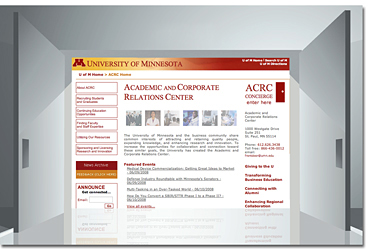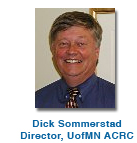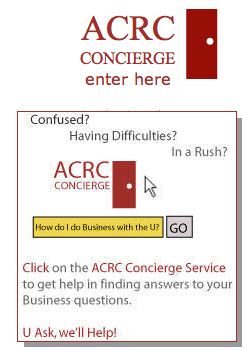 Every behemoth company or institution shares a fundamental problem: they’re so big and organized in silo’s that access to the wealth of opportunities and resources they could offer is minimized. If only people on the outside could figure out what’s available, whom to call and how to engage with the right people inside, this problem could be addressed head-on.
Every behemoth company or institution shares a fundamental problem: they’re so big and organized in silo’s that access to the wealth of opportunities and resources they could offer is minimized. If only people on the outside could figure out what’s available, whom to call and how to engage with the right people inside, this problem could be addressed head-on.
In 2005, the University of Minnesota (UofMN) surveyed Minnesota CEO’s and asked for input from members of the Itasca Project (a group comprised of big company CEO’s and key governmental leaders) with the basic question, “What do you want from the University of Minnesota?”
The wish list was extensive and reinforced their challenges in accessing the UofMN’s opportunities and resources: ready-for-hire graduates; continuing education for employees; consulting services from University faculty; research sponsorships; access to research facilities, and more.
After more research with focus groups and outstate Minnesota analysis, in July of 2006 the UofMN created the Academic and Corporate Relations Center (ACRC) and brought on board a guy wired as an entrepreneur, experienced in startup businesses, and full of energy to deliver what has become known as “the front door” to the institution: Director, Dick Sommerstad.
As a Minnesota startup, involved with an emerging company or an intrapreneur within a corporation, you may be thinking, “What in the world could Sommerstad’s ACRC offer me?” As you’ll soon discover, there is a wealth of resources at your fingertips just waiting for you to access them.
My long-standing impression (and admitted bias) toward organizations like ACRC was that most are out of touch with the needs of the entrepreneur and those of us driving forward on making ideas a reality. After opening my mind to the possibilities and opportunities the University is offering, what I came away with both reinforced that bias and slightly shifted my thinking toward the benefits of engaging with ACRC going forward and, possibly, what position the UofMN could play as a leader.
 I sat down recently with Dick Sommerstad to lay out the vision and mission of Minnov8, with the goal being to discover what the UofMN might offer to our readers: the creators and innovators in Minnesota building the next generation of Internet and Web technologies.
I sat down recently with Dick Sommerstad to lay out the vision and mission of Minnov8, with the goal being to discover what the UofMN might offer to our readers: the creators and innovators in Minnesota building the next generation of Internet and Web technologies.
We began by looking at the resources within the UofMN that existed before the ACRC was formed and the steps, systems and access-streamlining this new group put into place in order to enable businesses to have a much easier time of connecting directly with the University:
- ACRC Business Portal
- Centers & institutes database
- Faculty resumes database
- Licensable technologies
- Facilities and equipment
- Libraries
- Concierge
 The Concierge service is particularly intriguing. If you’ve ever tried getting your needs met engaging with a major institution or company you know the difficulties in getting questions answered or pointed in the right direction to get your needs met.
The Concierge service is particularly intriguing. If you’ve ever tried getting your needs met engaging with a major institution or company you know the difficulties in getting questions answered or pointed in the right direction to get your needs met.
This service has phone and email access (staffed 8-5pm Central, Monday through Friday) and relationship managers for larger organizations.
They’ve reduced dozens of access points to about a dozen with even more streamlining of access coming. A realtime chat feature, database of all UofMN websites, a public engagement database as well as six regional portals throughout the State are in the planning stages.
During our conversation, I was forthright with my perspective on most of these resources being “big company” or “large startup” (vs. early stage) sorts of offerings. Sommerstad agreed, and as we talked about the needs of the Minnesota startup community and that Minnov8 was geared toward helping foster an environment of connection and encouragement for the startup community here — something woefully lacking and in stark contrast to the risk taking, entrepreneurial environment in Silicon Valley — we went off on a tangent about what’s truly needed in Minnesota.
“It’s all about the CEO,” Sommerstad stated emphatically. He was adamant that attracting world-class CEO’s to Minnesota for startup companies was the #1 challenge and said that “ideas are a dime-a-dozen” when I protested that without great ideas, an entrepreneurial and risk-taking climate, angel investing and help to incubate new innovations, those CEO’s wouldn’t even be needed!
We didn’t resolve this chicken-or-the-egg impasse.
As we talked further about exactly which resources would be of interest to early stage companies, we began to zero-in on these:
- Gold Pass: Need employees, $12/hour programmers or $50/hour PhD’s in the summer? This is a free jobs site and recruiting spot with significant promise
- Centers of Expertise: Use this tool to search over 300 interdisciplinary research centers, institutes and programs and discover a wide-range of experts
- Other areas include the Office of Licensable Technology which, by the way, I’d love to go to and just poke through all the possible technologies just lying there waiting for someone to connect the dots and deliver the next great innovation
- The last few areas of interest may be a news site on UofMN innovation brought forth by the Office of the Vice President for Research here, signing up for the “Announce” list (a selectable email update sent out each Friday), or just poke around the website of your choice here
- You’re Invited! ACRC is sponsoring a free (but RSVP required) Annual ACRC-University Enterprise Labs Summer Barbeque on July 30th.
Web-savvy users might be struck by the lack of RSS feeds or a single point of searching all databases, but Sommerstad assured me that both of these are in the works.
Upon reflection there is no question Dick Sommerstad and the ACRC team have done an amazing job of consolidating the UofMN resource base (and all the silo’s of information) into a significantly more accessible “front door” and have been successful in coordinating and orchestrating that access.
That said, it seems that there is a missed opportunity to position the University as the hub of research, education, outreach and the high level coordination and orchestration point for our entire State where it pertains to the Internet and Web.
If you accept the premise that the Internet and Web is the greatest shift in human and machine connection in human history — impacting everything from knowledge and information access; process streamlining; commerce; social interaction; and its impact on culture — then wouldn’t it seem mission-critical for the UofMN to lead? Wouldn’t part of that leadership be fostering an environment for the best ideas in this space to be incubated and brought forth, within the context of socioeconomic, technological, communications and global trends?
One could argue The Collaborative, Minnesota High Technology Association, GetGoMN, MentorNet and others are doing what’s needed: providing near-term opportunities for startups to connect with those who can assist the startup or emerging MN company in making ideas a reality and forming or accelerating their businesses.
I would argue that we don’t do enough incubating in Minnesota (and is one reason why MinneBar and Minnedemo are so well attended and successful) and these efforts are important, but if a startup, emerging company or even a corporate intrapreneurial effort is roughly a year or so from launching, wouldn’t it be useful and a competitive advantage to understand the trends and influencing factors that will affect that launch a year away? This is where the UofMN could be positioned as the leader in coordinating and orchestrating knowledge, taking a 40,000 foot view of major trends and influencers, and providing guidance and insight to all of us that would go far beyond what any of these other efforts could possibly satisfy.
For instance, what if the UofMN Continuing Education or ACRC offered:
- A scenario planning workshop that looked at all the influencing factors affecting Internet and Web development?
- A comprehensive analysis of key open source software and the ecosystems surrounding them in order to gauge their health before embarking on building your startup atop of one of them or betting your business initiative on it?
- How about understanding global, mobile adoption rates, network speeds and the platforms upon which you could deliver your application
Is there anything for you at the ACRC? If you’re a startup, there are few resources (other than Gold Pass) that seem immediately relevant and ones you could take advantage of today. Many more of these are germane if you’re within a corporation that has big needs where a collaboration or partnership with the University could pay big dividends, but the ACRC is worth you investing some time in understanding what’s there and considering how this public institution could help you.